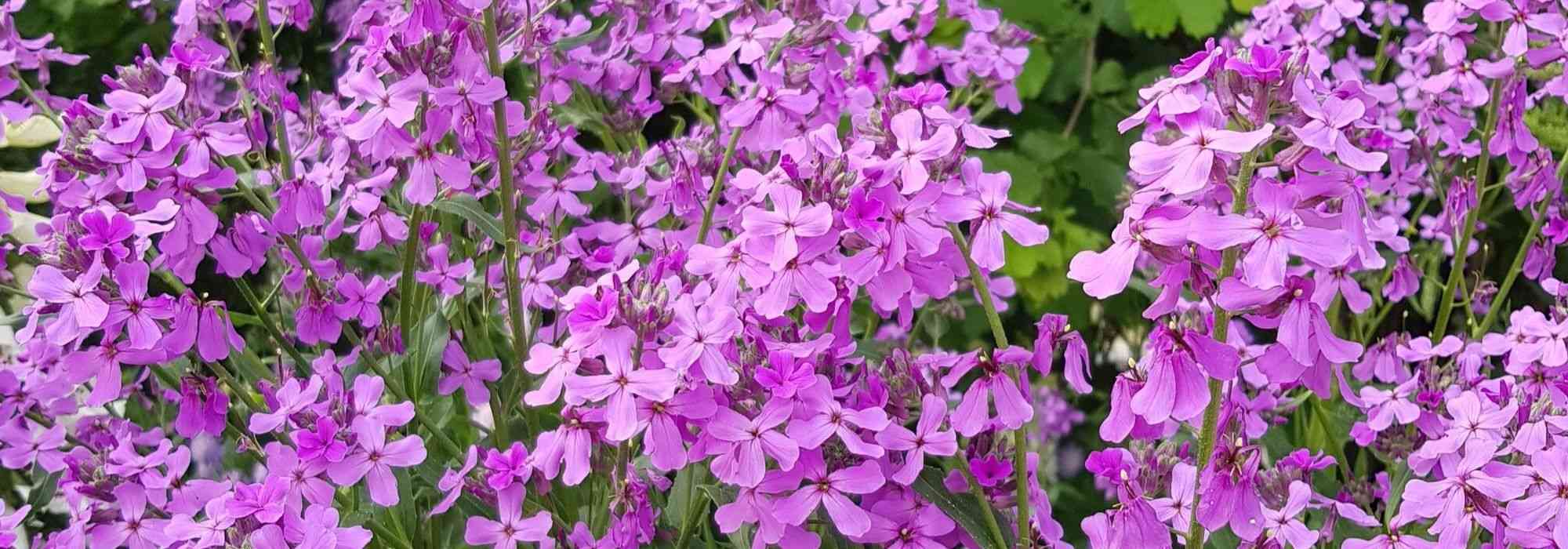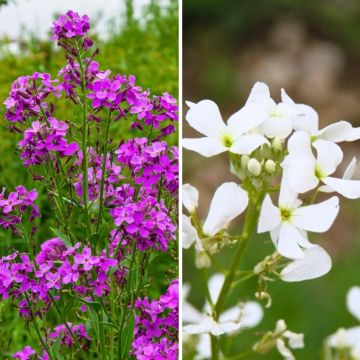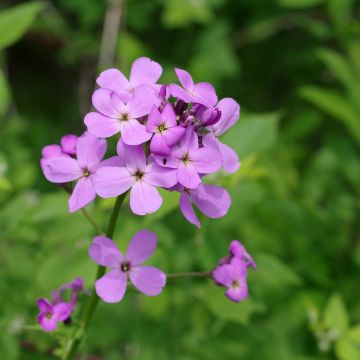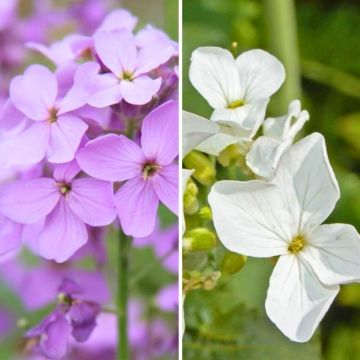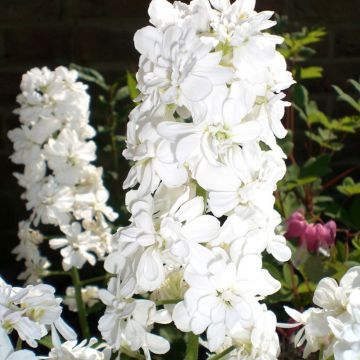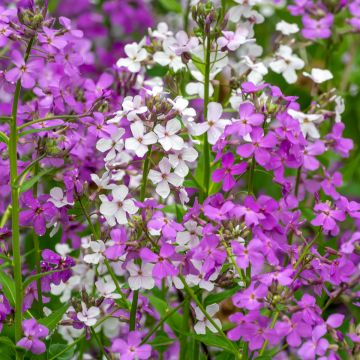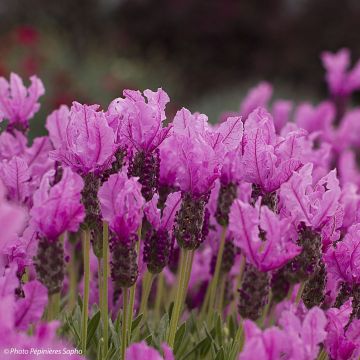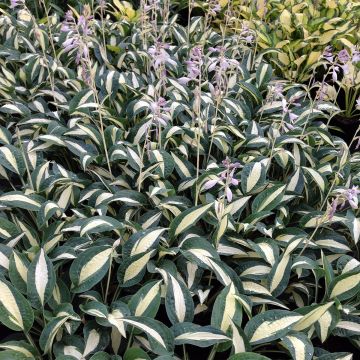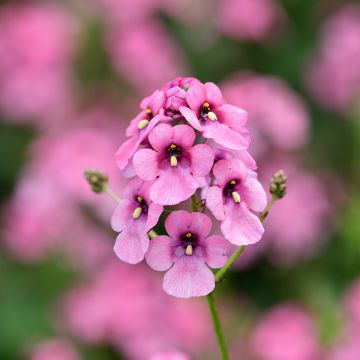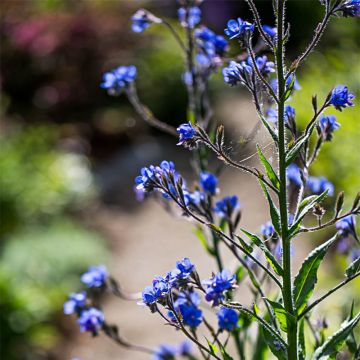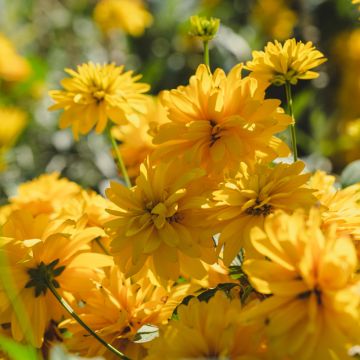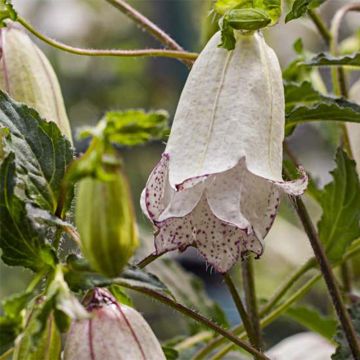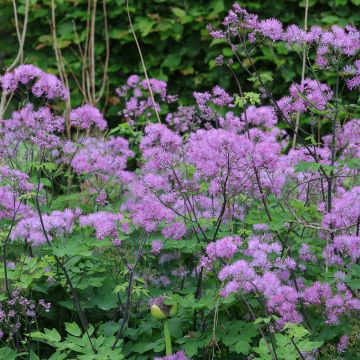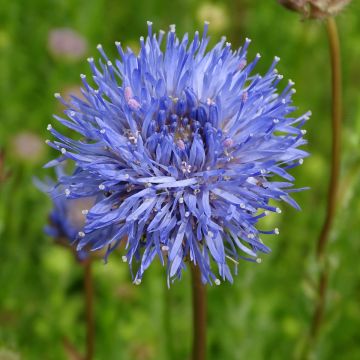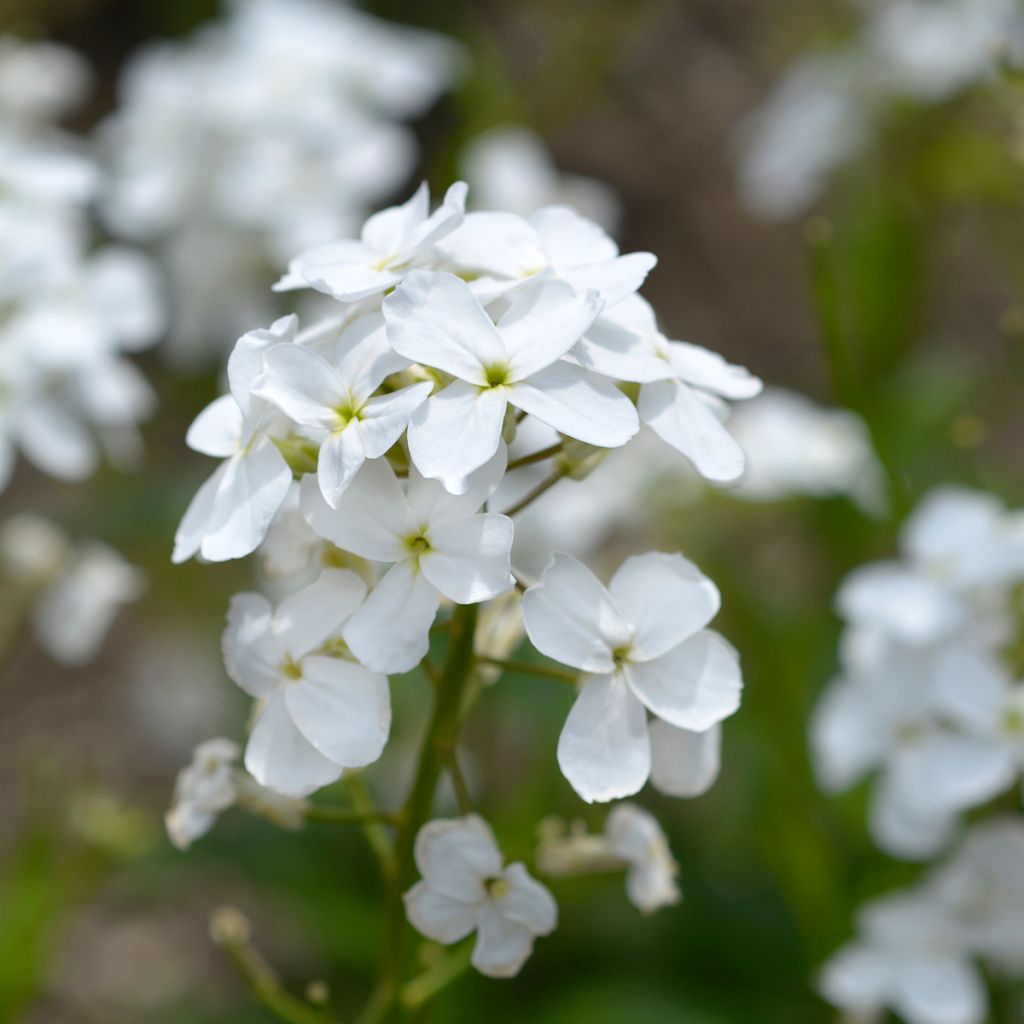

Hesperis matronalis Alba


Hesperis matronalis Alba
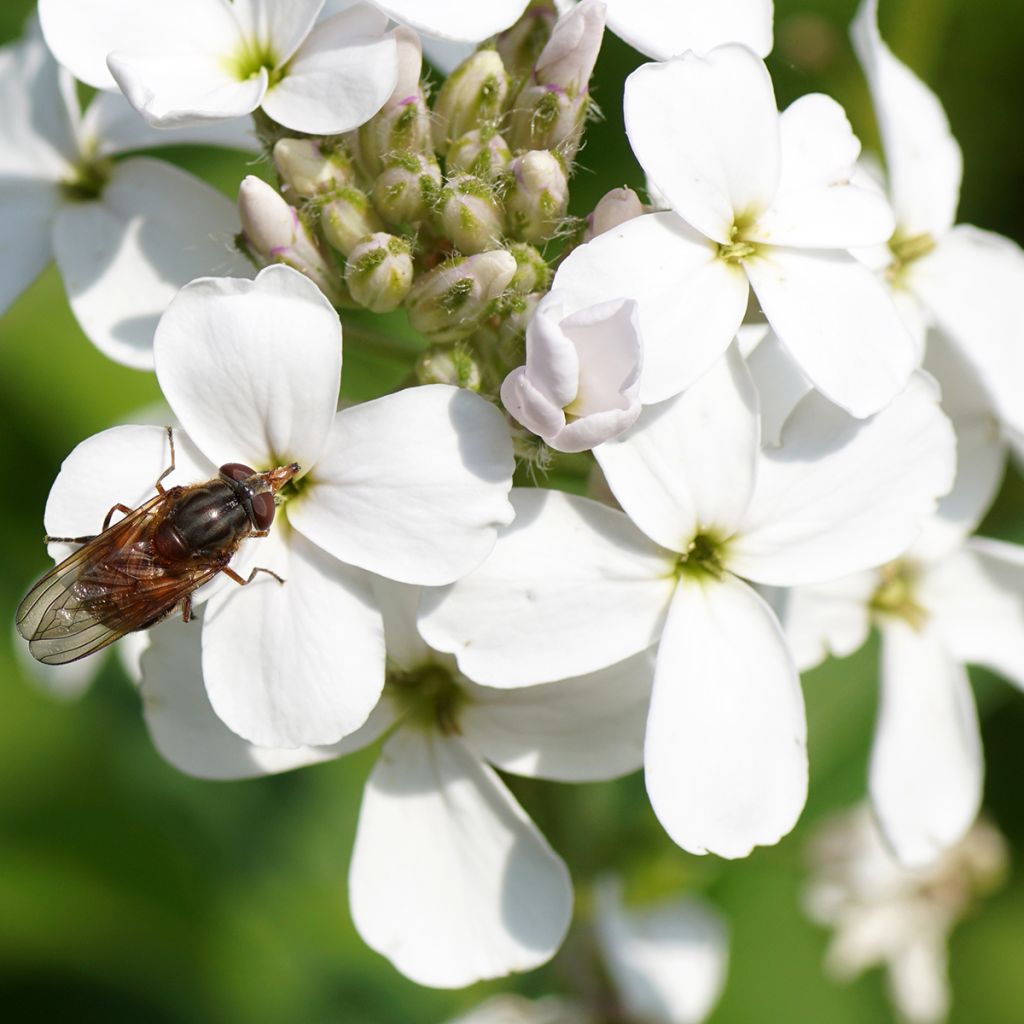

Hesperis matronalis Alba
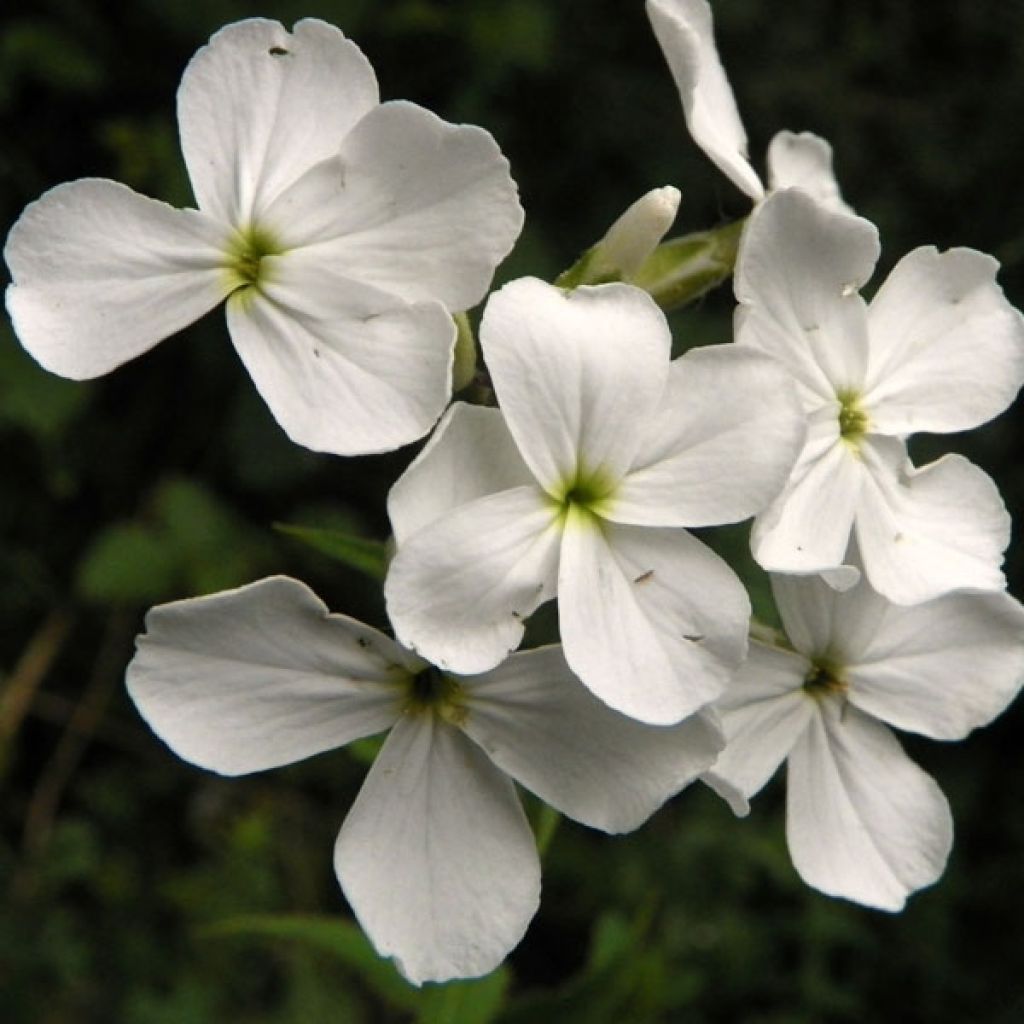

Hesperis matronalis Alba
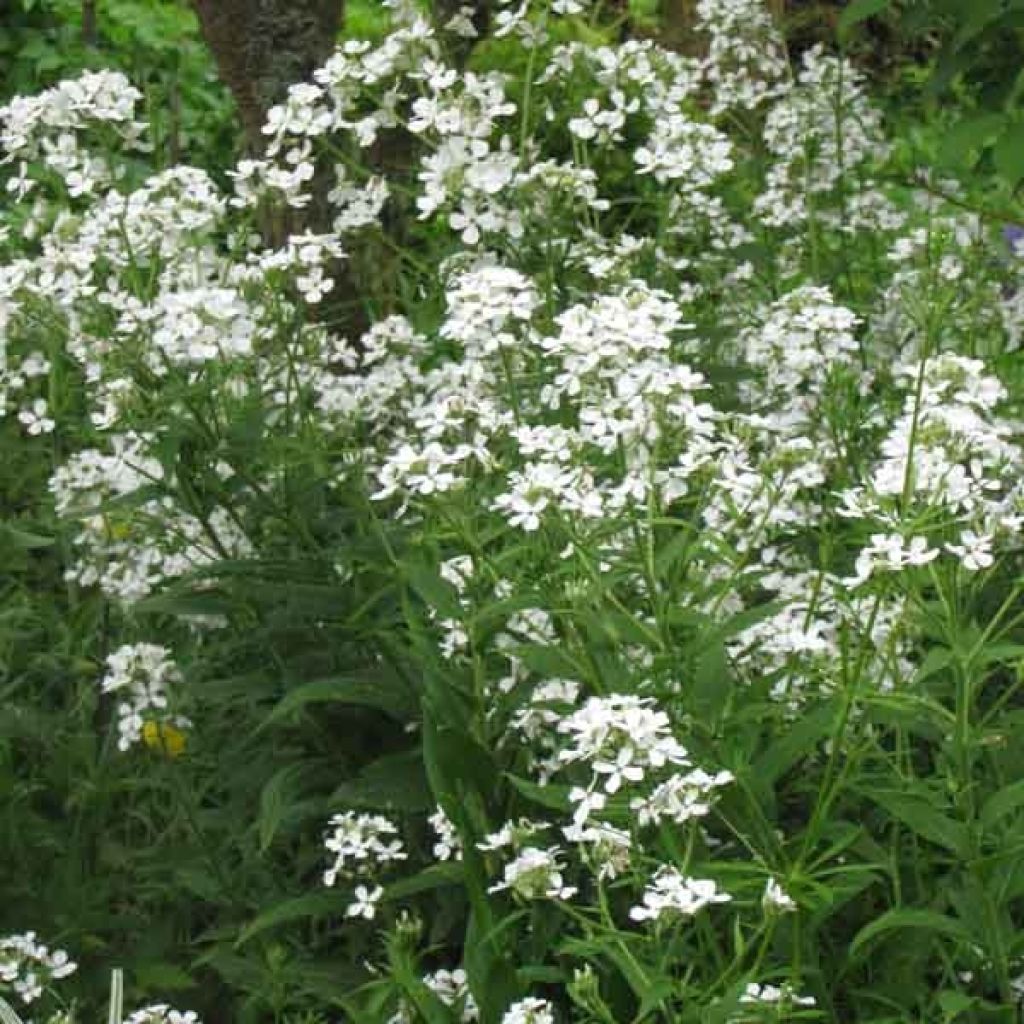

Hesperis matronalis Alba
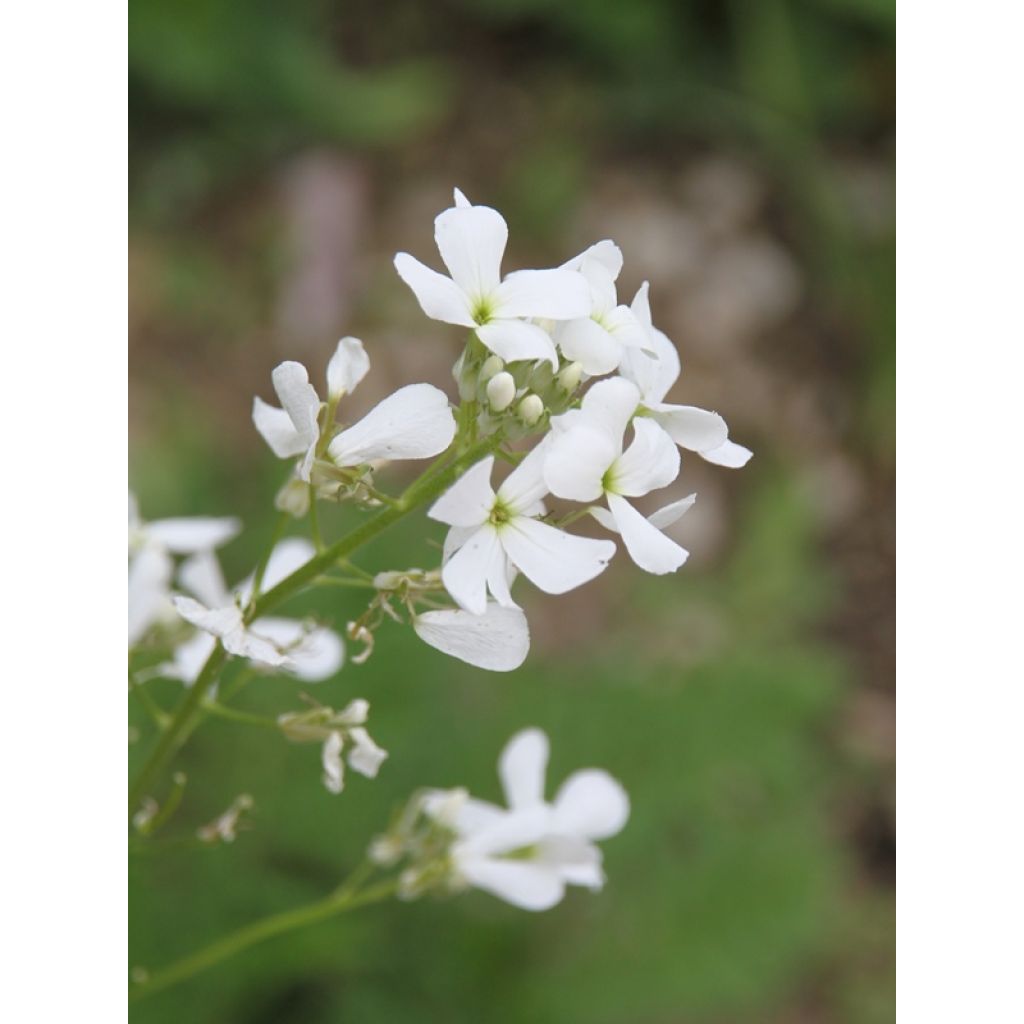

Hesperis matronalis Alba
View more pictures
Hide images
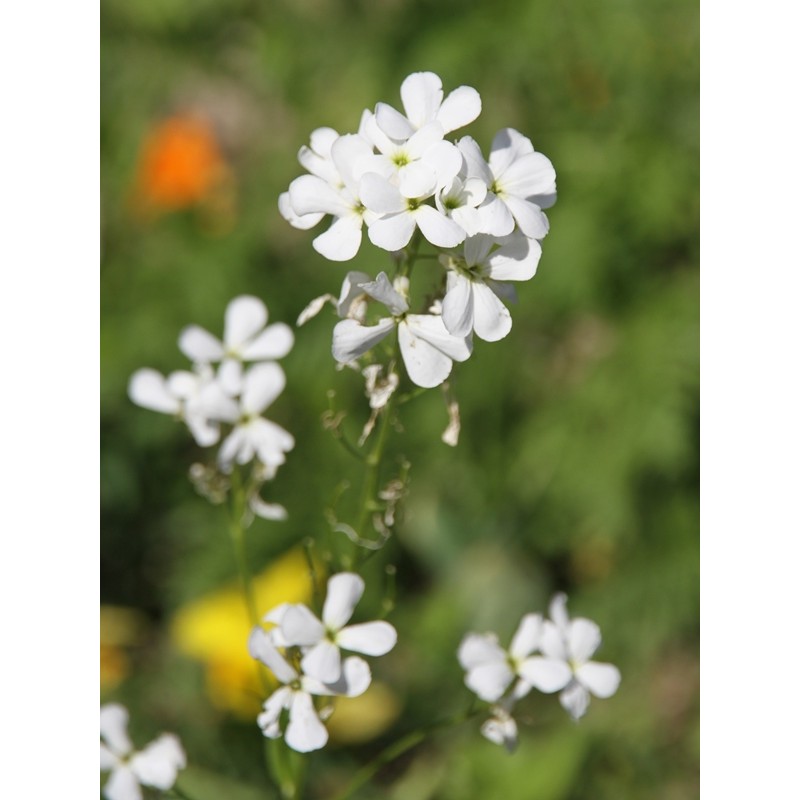
Elise A.

Elise A. • 51 FR
Hesperis matronalis Alba
Hesperis matronalis Alba
Dame's Rocket, Damask Violet, Night-scented Gilliflower, Queen's Gilliflower, Rogue's Gilliflower, Summer Lilac, Sweet Rocket, Mother-of-the-evening
Very good recovery despite a package in which the young plants had suffered a bit from being too tightly packed and transported without respecting the instructions for the horizontal position of the package. The three shoots have grown well and flowered! Very beautiful flowers, delicate with a sweet fragrance. I should have planted them closer together for a mass effect.
Severine, 21/06/2021
Special offer!
Receive a €20 voucher for any order over €90 (excluding delivery costs, credit notes, and plastic-free options)!
1- Add your favorite plants to your cart.
2- Once you have reached €90, confirm your order (you can even choose the delivery date!).
3- As soon as your order is shipped, you will receive an email containing your voucher code, valid for 3 months (90 days).
Your voucher is unique and can only be used once, for any order with a minimum value of €20, excluding delivery costs.
Can be combined with other current offers, non-divisible and non-refundable.
Home or relay delivery (depending on size and destination)
Schedule delivery date,
and select date in basket
This plant carries a 12 months recovery warranty
More information
We guarantee the quality of our plants for a full growing cycle, and will replace at our expense any plant that fails to recover under normal climatic and planting conditions.
Would this plant suit my garden?
Set up your Plantfit profile →
Description
Hesperis matronalis Alba is a delightful form of Dame's Rocket.with single pure white flowers. The main asset of this short-lived perennial is its fragrance, which is reminiscent of jasmine. The name Hesperis comes from the Greek hespera which means "evening", alluding to the fragrance of the flowers that intensifies at the end of the day. Its clusters of immaculate flowers bloom from spring to mid-summer, animated by the constant flight of pollinating insects. Plant it in wildflower beds, where it will require very little maintenance and easily self-seed.
Dame's Rocket is a plant belonging to the Brassicaceae family, along with rapeseed and mustard. It is native to central and southern Europe, as well as northern and western Asia. While theoretically a perennial, it is most often cultivated as a biennial. This herbaceous plant has an upright, sparsely branched habit, except in its upper part, reaching a height of 60 to 80 cm (24 to 32 in) when in flower, with a diameter of 30 cm (12 in), and grows very rapidly. Its deciduous foliage disappears in winter. It consists of large leaves (10 to 20 cm (4 to 8 in) long), which are dark green, alternate and lanceolate with dentate margins and without petioles. Flowering occurs from mid-spring to summer, from May to July. The white flowers of this 'Alba' selection, delicately fragrant in the evening, are nectar-rich and attractive to bees and butterflies, such as sphinx moths, which ensure pollination. They are grouped in terminal clusters of small single flowers with 4 sepals, 4 petals, and 6 stamens. The fruits are small siliques containing numerous seeds that will easily germinate in light soil if left in place.
Dame's Rocket self-seeds abundantly, and it is not uncommon to find plants growing at a good distance from the original plant. For this reason, it is well suited to "wild" gardens. It works wonders near pathways and openings where you can enjoy its delightful wallflower-like fragrance on summer evenings. It is often overlooked, but it can easily be grown in pots in groups of 3 or 4 plants. For example, associate them with daffodils and tulips, or in an Impressionist painting-like garden, such as Monet's garden, with garden irises, snapdragons, bellflowers, or goldenrods. The 'Alba' variety pairs beautifully with pale blue or purple delphiniums, as well as bright yellow rudbeckias. It can be combined with pure white phlox paniculata, white bee balm, summer daisies, or dahlias to create a beautiful white garden.
Properties and uses: the fragrance and pastel colour of the flowers make it suitable for potpourris. The young leaves and flowers are edible, but they may be a bit too bitter for some palates.
Hesperis matronalis Alba in pictures
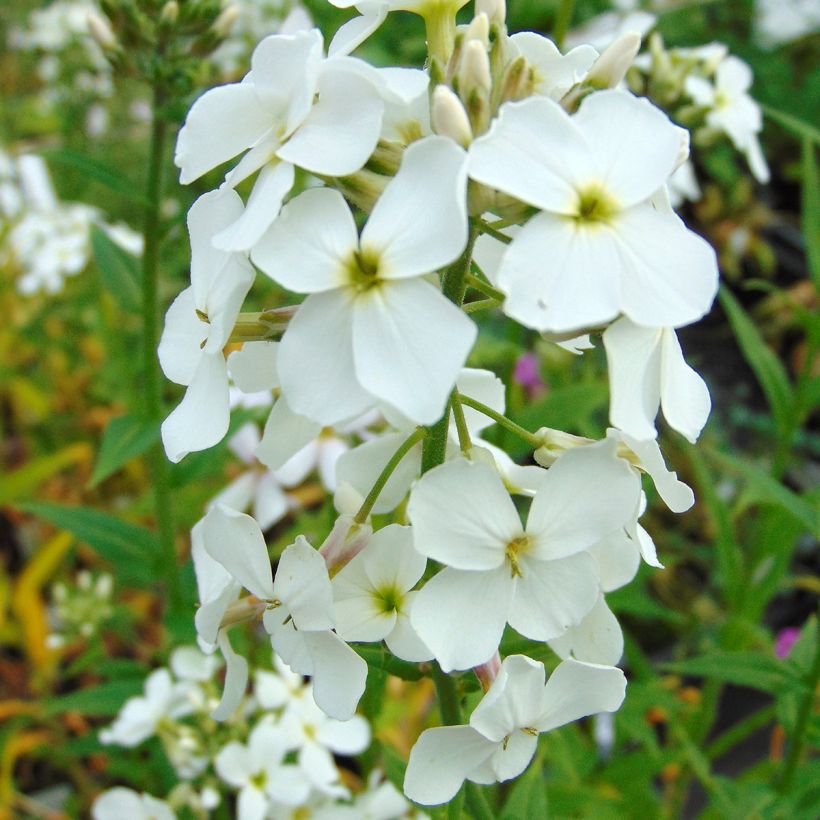

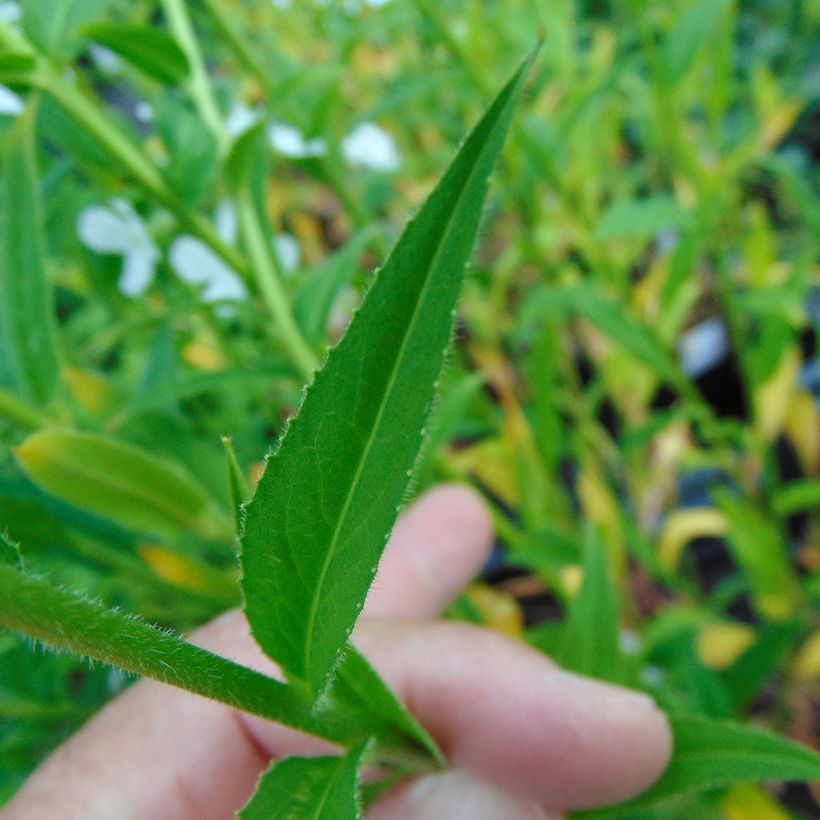

Flowering
Foliage
Plant habit
Botanical data
Hesperis
matronalis
Alba
Brassicaceae
Dame's Rocket, Damask Violet, Night-scented Gilliflower, Queen's Gilliflower, Rogue's Gilliflower, Summer Lilac, Sweet Rocket, Mother-of-the-evening
Eastern Europe
Other Hesperis
View all →Planting and care
Hesperis thrives and flowers for a long time in a semi-shaded environment. Full sun is also suitable, but it should not be too scorching and the soil should not dry out too deeply. Place the plant in fertile, deep, cool, and well-drained soil. However, Hesperis grows well in any good garden soil. Plant 6 to 8 feet in 1 square metre (3 square feet). Bury the collar of the plant 2 cm (1 in) below the surface of the soil. The plant needs to be kept cool throughout the year. There is not really any maintenance required. It is simply a matter of removing faded flowers to encourage flowering. Water in case of drought during the summer to obtain an abundance of flowers. The stems are resistant to wind and do not require staking. Beware of viruses and mildew, as well as snails, slugs, caterpillars, and flea beetles that can harm the plant.
Planting period
Intended location
Care
Planting & care advice
-
, onOrder confirmed
Reply from on Promesse de fleurs
Similar products
Haven't found what you were looking for?
Hardiness is the lowest winter temperature a plant can endure without suffering serious damage or even dying. However, hardiness is affected by location (a sheltered area, such as a patio), protection (winter cover) and soil type (hardiness is improved by well-drained soil).

Photo Sharing Terms & Conditions
In order to encourage gardeners to interact and share their experiences, Promesse de fleurs offers various media enabling content to be uploaded onto its Site - in particular via the ‘Photo sharing’ module.
The User agrees to refrain from:
- Posting any content that is illegal, prejudicial, insulting, racist, inciteful to hatred, revisionist, contrary to public decency, that infringes on privacy or on the privacy rights of third parties, in particular the publicity rights of persons and goods, intellectual property rights, or the right to privacy.
- Submitting content on behalf of a third party;
- Impersonate the identity of a third party and/or publish any personal information about a third party;
In general, the User undertakes to refrain from any unethical behaviour.
All Content (in particular text, comments, files, images, photos, videos, creative works, etc.), which may be subject to property or intellectual property rights, image or other private rights, shall remain the property of the User, subject to the limited rights granted by the terms of the licence granted by Promesse de fleurs as stated below. Users are at liberty to publish or not to publish such Content on the Site, notably via the ‘Photo Sharing’ facility, and accept that this Content shall be made public and freely accessible, notably on the Internet.
Users further acknowledge, undertake to have ,and guarantee that they hold all necessary rights and permissions to publish such material on the Site, in particular with regard to the legislation in force pertaining to any privacy, property, intellectual property, image, or contractual rights, or rights of any other nature. By publishing such Content on the Site, Users acknowledge accepting full liability as publishers of the Content within the meaning of the law, and grant Promesse de fleurs, free of charge, an inclusive, worldwide licence for the said Content for the entire duration of its publication, including all reproduction, representation, up/downloading, displaying, performing, transmission, and storage rights.
Users also grant permission for their name to be linked to the Content and accept that this link may not always be made available.
By engaging in posting material, Users consent to their Content becoming automatically accessible on the Internet, in particular on other sites and/or blogs and/or web pages of the Promesse de fleurs site, including in particular social pages and the Promesse de fleurs catalogue.
Users may secure the removal of entrusted content free of charge by issuing a simple request via our contact form.
The flowering period indicated on our website applies to countries and regions located in USDA zone 8 (France, the United Kingdom, Ireland, the Netherlands, etc.)
It will vary according to where you live:
- In zones 9 to 10 (Italy, Spain, Greece, etc.), flowering will occur about 2 to 4 weeks earlier.
- In zones 6 to 7 (Germany, Poland, Slovenia, and lower mountainous regions), flowering will be delayed by 2 to 3 weeks.
- In zone 5 (Central Europe, Scandinavia), blooming will be delayed by 3 to 5 weeks.
In temperate climates, pruning of spring-flowering shrubs (forsythia, spireas, etc.) should be done just after flowering.
Pruning of summer-flowering shrubs (Indian Lilac, Perovskia, etc.) can be done in winter or spring.
In cold regions as well as with frost-sensitive plants, avoid pruning too early when severe frosts may still occur.
The planting period indicated on our website applies to countries and regions located in USDA zone 8 (France, United Kingdom, Ireland, Netherlands).
It will vary according to where you live:
- In Mediterranean zones (Marseille, Madrid, Milan, etc.), autumn and winter are the best planting periods.
- In continental zones (Strasbourg, Munich, Vienna, etc.), delay planting by 2 to 3 weeks in spring and bring it forward by 2 to 4 weeks in autumn.
- In mountainous regions (the Alps, Pyrenees, Carpathians, etc.), it is best to plant in late spring (May-June) or late summer (August-September).
The harvesting period indicated on our website applies to countries and regions in USDA zone 8 (France, England, Ireland, the Netherlands).
In colder areas (Scandinavia, Poland, Austria...) fruit and vegetable harvests are likely to be delayed by 3-4 weeks.
In warmer areas (Italy, Spain, Greece, etc.), harvesting will probably take place earlier, depending on weather conditions.
The sowing periods indicated on our website apply to countries and regions within USDA Zone 8 (France, UK, Ireland, Netherlands).
In colder areas (Scandinavia, Poland, Austria...), delay any outdoor sowing by 3-4 weeks, or sow under glass.
In warmer climes (Italy, Spain, Greece, etc.), bring outdoor sowing forward by a few weeks.






























